About the MICV 70 program
The development of the first US Infantry Fighting Vehicle (IFV) started at the near start of the Vietnam war and went up until 1980 when the XM-2 was standardized at the M2 Bradley. The development started with the MICV 65 and evolved after a complete reset by the general staff, to the MICV 70. The latter stands for "Mechanized Infantry Combat Vehicle, 1970". The goal was no longer to simply upgrade the M113 into an infantry combat vehicle or improved armoured perosnal carrier, but now to a larger, properly engineer vehicle able to answer the Soviet BMP-1 of the late sixties. There was no point on trying to develop a model based on the M113 but start again on a blank new page, notably to reconcilate the numerous competing duties that were added over the years: An APC, a combat vehicle capable of anti-tank capabilities doubled of a reconnaissance vehicle.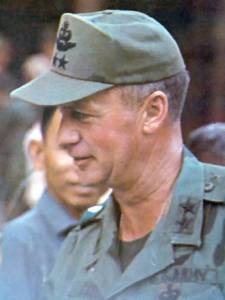 The MICV 70 program started in August 1968 under Army CoS General William C. Westmoreland (of Vietnam war fame) which Study Group called "Casey Board" after Major General George Casey (photo), which further examined the concept, and elaborating weight and cost reduction recommendations.
The MICV 70 program started in August 1968 under Army CoS General William C. Westmoreland (of Vietnam war fame) which Study Group called "Casey Board" after Major General George Casey (photo), which further examined the concept, and elaborating weight and cost reduction recommendations.
As information about the BMP started to become available, the Army turned to FMC for a vehicle would be produced at a lower cost, while having a better mobility, lighter weight and better armor than all previous models. A daunting task to say the least, even for the experienced staff of Food and Machinery Corp. Aware that all its previous proposals derived from the M113 basic chassis failed, engineers were tasked to draw an entirely new vehicle, later to be designated by the Army the XM723.
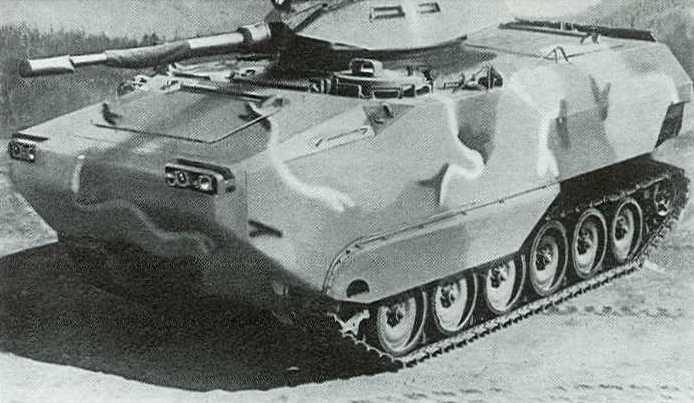
LVTP-X developed by FMC, to compete against Chrysler from 1963 on the LVTP-5 replacement program. The next LVT-7 shared many elements with the XM-723.
When the XM800 program was cancelled in 1975, the scout role was switched to the new vehicle as well. Thus the XM-723 new needed to be both declined into an IFV and a reconnaissance vehicle, which, given the rather stringent specifications, raised the bar even higher. In April 1972, the RFP assigned for a new Mechanized Infantry Combat Vehicle were answered by six companies, three selected:
-Chrysler Corporation
-FMC Corporation
-Pacific Car and Foundry
To develop cost estimates prototypes were ordered from each. In November 1972, FMC (by far the favourite) was awarded a $29.3 million and an 'incentive fee' (CPIF) for Engineering Development as well as 'Advanced Production Engineering' (to lower production cost in the future). The army would cover not only the design, development but also prototypes of three prototypes from FCM as well as ballistic vehicle, and no les than twelve pilot vehicles with all associated engineering systems, assurance and for test support. That was one of the most costly program to date, financed to a single company. In the Navy, similar scheme applied: According the Mc Namara's "wiz kids", the best way to design and built the next destroyer would be through a single company, in a "winner takes all" contract (the Spruance program).
The XM-723 came to be synonimous to the whole MICV–70 project. With every hands on deck, FMC did not spared a chance to create the best vehicle possible. Not only it was entirely purpose-built, generating tons of plans and specific items, sharing practically nothing in common to the M113 and not a lot with the LVTP. The XM723 still according to the program kept a light 20 mm cannon (see later) and coaxial machine gun in a one-man turret, unlike for the XM-800T. It was dotted with vision blocks, firing ports and was spacious enough to house a large mechanized infantry squad. That was an ambitious program, which struggled along the way, just as badly as the XM-1 (Abrams). Yet, bad rep stuck with the Bradley and this program, not the Abrams.
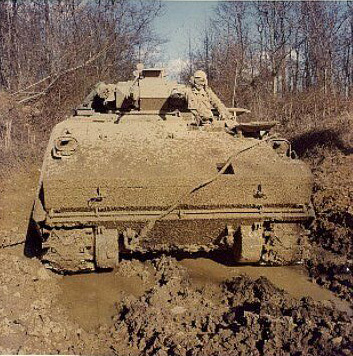 During the process, there were multiple leaps and bound due to several factors. The operational and fiscal conditions of the Vietnam War, then its aftermath lowered its priority. XM723 prototype were delivered in December 1972 and many voiced that the MICV–70 requirements needed to be toned down to a simple modification of the M113 already well combat-tested in Vietnam. New tests also of the BMP in the 1973 war even started to create doubt about the entire IFV concept. Some wanted just a better armed/protected M113, with an extra axle and better engine. After all, the XM-765 was now successfully exported as the AIFV.
During the process, there were multiple leaps and bound due to several factors. The operational and fiscal conditions of the Vietnam War, then its aftermath lowered its priority. XM723 prototype were delivered in December 1972 and many voiced that the MICV–70 requirements needed to be toned down to a simple modification of the M113 already well combat-tested in Vietnam. New tests also of the BMP in the 1973 war even started to create doubt about the entire IFV concept. Some wanted just a better armed/protected M113, with an extra axle and better engine. After all, the XM-765 was now successfully exported as the AIFV.
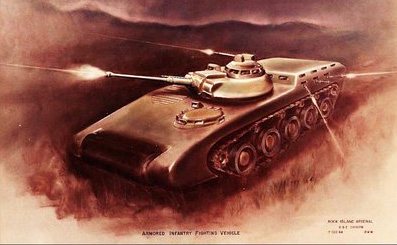 More so, came the Armored Reconnaissance Scout Vehicle (ARSV) program, in 1974. Budget cuts had it axed for good, despite protestation of cavalry officers. It was clear that it needed to be integrated into the MICV program, creating in the end two vehicles types out of the XM723. At least this merger urged to the eyes of the dubitative Congress, already appealed by the time of development, the 1975 program to the Army. At stage it was "too big to fail". A patten we are familiar too well today. But this also infused a new level of complexity into the already protracted development, and thus further compromises and delays.
More so, came the Armored Reconnaissance Scout Vehicle (ARSV) program, in 1974. Budget cuts had it axed for good, despite protestation of cavalry officers. It was clear that it needed to be integrated into the MICV program, creating in the end two vehicles types out of the XM723. At least this merger urged to the eyes of the dubitative Congress, already appealed by the time of development, the 1975 program to the Army. At stage it was "too big to fail". A patten we are familiar too well today. But this also infused a new level of complexity into the already protracted development, and thus further compromises and delays.
XM-723 Design
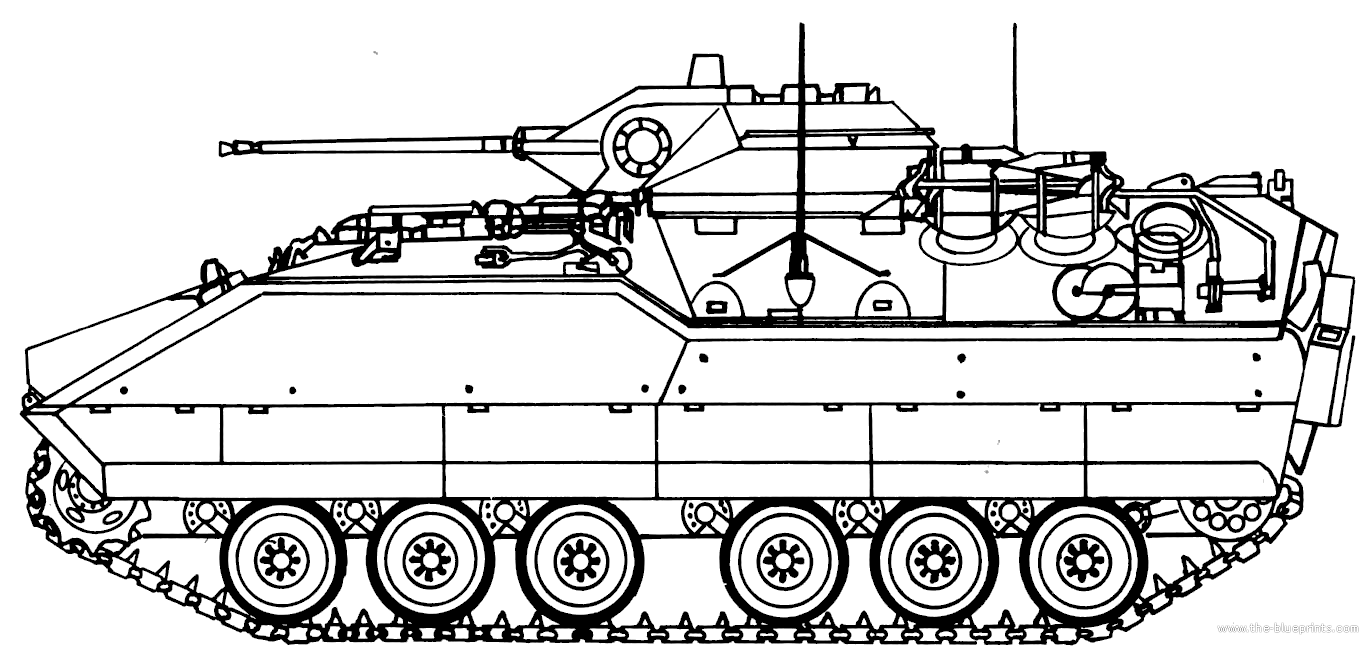
Blueprint
The new vehicle was based on the machinery of the existing, recent, other success of the company, this time for the US Marine Corps, the LVTP-7. The first two prototypes were completed by the summer 1975. The XM723 borrowed a few parts and traits from the Amtrac series but it was obvious it could never meet the required 35,000-pound. The army accepted instead to raise it to 38,000-pound (17 tons), and the final one was close to 43,000 pounds, with later pilots reaching 43,700 pounds (20 tons). Weight addition were the result of cost reductions: Replacing for example steel instead of titanium. Scores of changed were made to meet reliability and durability requirements.
Hull and protection features
The XM-723 kept a basic crew of 3 (driver, commander in single turret, radio/mechanic) with 9 Infantrymen seated behind on two bunks back-to-back, with rifle ports and vision blocks and an extra separate seat. The single man turret sported the same 20mm cannon derived from the Hispano Suiza model, but it was soon changed (see below). There was also a 7.62mm coaxial machine gun. The vehicle had a hull composed of welded blocks in laminated steel and reinforced aluminium, making a composite structure still light but with improved protection against small arms fire, up to 14.5mm (the heavy Soviet vehicle KPV heavy machine gun seen on the BTR-60 and BTR-70.Mobility
The powerplant chosen was the one from the LVT-7, presumably either the Cummins VTA-903T diesel 600 hp (450 kW) or more likely the Detroit Diesel 8V-53T (P-7), 400 hp. No specifications and performances published. The vehicle was still amphibious, given the buoyancy, and massive forward trime vane, however no photos shows it attempting to swim. For tactical transport, the vehicle was tested onboard the YC-17 medium tactical transport. It fit in without issue.XM-723 offloaded from a YC17 cargo plane
Crew heat stress inside the Mechanized Infantry Combat Vehicle MICV-XM-723 was evaluated on seven subjects during operations in a summer desert environment. The projected buidup of internal humidity with occupant sweat did not reach the levels which would lead to heat intolerance within two to three hours. Although with a full crew i.e. 11 instead of 7 subjects, the internal humidity buildup might have been a bit higher, in essence, it would appear that subjects inside the vehicle will be at less thermal risk from heat stress than they would outside the vehicle, as long as the ventilation system is running and the vehicle is not overpressurized or tightly sealed against toxic agents. The observed WBGT levels, while quite stressful for active subjects unacclimatized to heat, would be reasonably well tolerated by well acclimatized subjects at the maximum levels of activity that could probably be attained while firing from within the vehicle. Full report in the links.
Armament
Throughout the development, the M139 proven disappointing and a new 20 mm VRFWS-S "Bushmaster" was started, being a risky proposition. Eventually when adopted in 1976, the program became the XM3, so the XM723 officially only had the M139. There were also tests performed with the pistol ports showing there was too little room for a standard M16 rifle and so the M231 Firing Port Weapon was adapted for this as open-bolt, full-auto variant of the M16.The other peculiarity was that the initial single man turret lacked a ring mount and overhead AA capable machine gun, M60 or else. Instead, the coaxial M219 LMG was adopted in the glacis in the turret front, fixed, also also firing tracers to help pointing the main autocannon.
The third point was the need for the cavalty to have a TOW capability on board. Many tests were performed with a single TOW ATGM tube mounted close to the turret. It exposed the user to surrounding fire while space was limited inside for reloads so it was not a satisfactory system. Later a canister system with more tubes, installed alongside the turret was chosen, but that was for the two-man turret envisioned for the cavalry variant that became the CFV, and later the XM3. The new M242 25mm Bushmaster cannon adopted, completed by Tow missile rack on the XM3 fired a large variety of rounds: M791 APDS (defeating 60mm at 2000m), M792 HEI (35mm at 3000m), MK210 HEI, M919 APFSDS (100mm at 2100m). It was a far cry from the limited 20 mm M138...
The XM-723 program further leaps and bounds
The XM-723 had a troubled development history. Despite its skills, FMC had a hard time meeting performance requirements within the specified cost, and to keep weight and dimensions down. More so after merger with the recon vehicle program. The MICV–70 specifications were indeed harsh and the "winner takes all" approach brought many frustrations in the army manufacturing club, raising a lot of criticisms and generating many "i have a more cost-effective, conform to requirement solution" for the losers.Meanwhile, a new task force was established under Brigadier General Larkin. The latter compared foreign Infanrtry Fighting Vehicles, and that included the German Marder, French AMX-10P, and the few BMP-1s captured from Syria by the Israeli. This generated a second study which advocated an even greater, tank-like protection, leading to the "Heavy Infantry Vehicle". Since the IFV was supposed to serve alongside the new XM-1 main battle tank, it made sense. However this implied hair raising new constraints, and eventually it was rejected on cost grounds by the Congress.
So were gone its new associated logistical requirements, added to the fact the new IFV was way too heavy to be amphibious, something the army insisted upon: The new MBT was to ford rivers with a new wading kit, while the IFV was to swim above. Larkin's study ended in 1976 and its signature addition was probably the most controversial, as it added to the already bloated vehocle, a version equipped with TOW missiles, for the light cavalry role(ultimately leading to the XM-3, future M3 Bradley).
FMC's XM723 however was large enough to seeminglt take on both roles, and so the army doubled down on its completion and preparation for production. The final result was named the XM2 (for the Infantry Fighting Vehicle) and XM3 (for the Cavalry Fighting Vehicle). The turret was to be single-man on the IFV, with the new VRFWS-S cannon, and the XM3 having a two-man turret with same cannon but twin-tube TOW launcher to deal with other tanks. The two-man turret also allowed the commander a better field of view and more efficient observation role as it could be seconded by the gunner when buttoned-up. Eventually, the VRFWS-S cannon was upgraded to 25 mm instead of 20 mm and it was standardized as the M242 Bushmaster. Both program then ended with the M2/M3 Bradley Fighting Vehicle, still around today with the Abrams and complementary...
The headache of a twin-model program
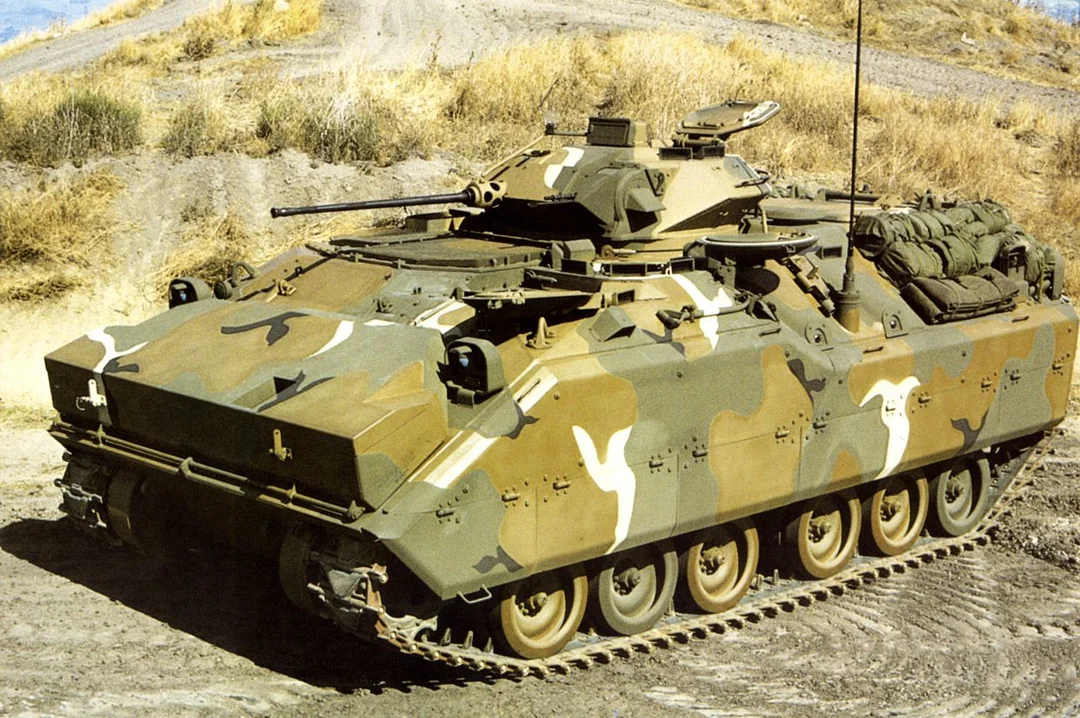
Final prototype, tested with MERDC camouflage After the Scout and Infantry variants were established, it was agreed that they would share basically the hull, and all that came with it, notably the engine, transmission, drivetrain and protection but the differing elemnt was to be their weapons stations. The infantry version kept the one-man turret but with a new planned autocannon to replace the M139 which own development went on in parallel. The Scout had a new twin man, larger turret, with the commander stationed at the highest point and given a 360° field of view. But the greatest addition was wire guided TOW anti-tank missile in the post-Vietnam reorientation of the US Army to European warfare and scores of Soviet Tanks. The Tow tube was to be placed on a large pintle.
But the army was early of asking the congress more funding for a program for a single vehicle having two hulls, three turrets types. Cancellation, like the MBT–70 and ARSV, were expected. Despite many voices asking for it, the army wanted nothing of a return to a M113-based MICV so by August 1976 the Department appointed Brig. Gen. Richard Larkin from the 4th Infantry Division (Mechanized) and its task force for three months and his conclusion was to keep the hull unitary (with a more modular approach for the rear compartment) and that the one-man turret was to be drop and concentrate on the 2-man turret (with optional TOW canisters) and the level of protection altered. Most points derived from the shortcomings noted on the BMP from 1973.
Further tests proved his points, showing the XM723 difficult to command, even after the addition of a light-emitting diode display to transmit target bearings to the gunner. The cavalry vehicle was to have a revised rear compartment to stockpile ATGMs, and a smaller crew, no firing ports. Both now would share the very same turret, including TOW, giving that tank-busting capability to all IFVs per company and no longer to a few specialists at battalion level. Each mechanized infantry squad was now consireably reinforced with an unseen level of density for antitank firepower. It was just perfect to present in the new context of European warfare against unstoppable hordes of Soviet tanks.
This new step was dictated in part by the Army Training and Doctrine Command (TRADOC) and General William DePuy releasing its doctrinal manual 'FM 100-5, Operations'. From peripheral/asymetric, counterinsurgency it reoriented the whole concept of motorized division towards the war in Europe with a tactical "covering force" dotted with excellent antitank capability, working alongside armoured divisions. They were merely a way to delay Soviet armoured divisions, fixed them to be quartered by aviation, artillery and met with reinforcing armour.
In 1975 the XM723 became the new baseline cavalry vehicle and the Army managed to combine cavalry and infantry fighting vehicle requirements. This became the "Mechanized Infantry Combat Vehicle Program" by August 1976 (MICV 76) while Congress obtained that a new team formed by the Army evaluate the XM723 program to see of it still meet future requirement of the Army (had room for evolution/improvements). Soon a new program called the "Fighting Vehicle System" (FVS) led to design in parralel the XM2 Infantry Fighting Vehicle and the XM3 Cavalry Fighting Vehicle.
Last vehicles of the XM723 program including the pilots, were redesignated XM2/XM3 with FMC being awarded a new contract for modified vehicles, covering redesign costs and by March 1977, the MICV program became FVS program leading to the final development of the future M2/M3 Bradley Fighting Vehicles of the next decade.
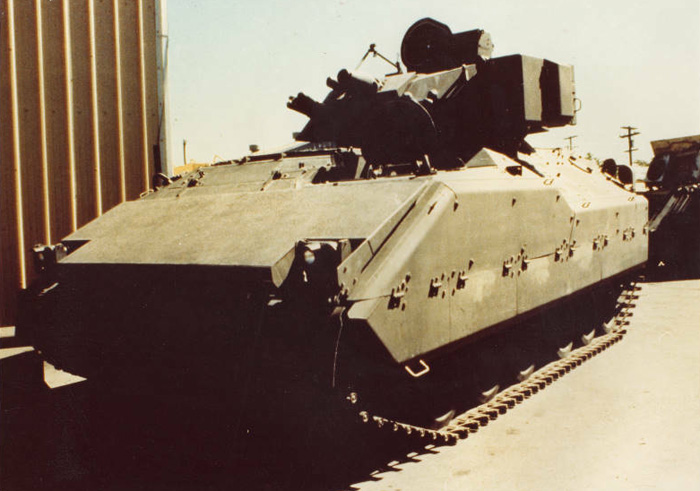
XM2 prototype, note the new "universal" two seat turret.
XM-723 specifications | ||
| Dimensions | 6.55 x 3.6 x 2.98m (21.5 x 12 x 9.8 ft) | |
| Total weight, battle ready | First proto 21t nominal, last 27.6 tons | |
| Crew | 3 (driver, cdr, gunner) | |
| Propulsion | Detroit Diesel 8V-53T (P-7), 400 hp | |
| Suspension | Torsion bars | |
| Speed (road) | Unknown | |
| Range | Unknown | |
| Armament | 20mm M139 autocannon, coax M219 MG, HOT*. | |
| Armor | Laminate armor up to 14.5mm | |
| Total production | 3 prototypes (later pilots XM2) | |
Illustrations
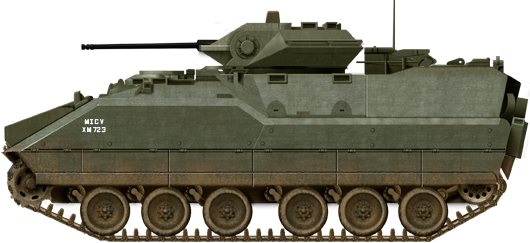
XM-723 early prototype by FCM, 1974.
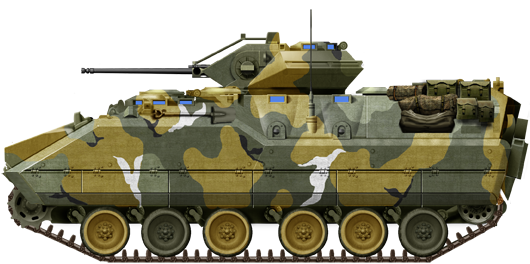
XM-723 later prototype in field tests, MERDC pattern, 1975.
Photos

Initial MICV 70 one turret prototype (three tested)
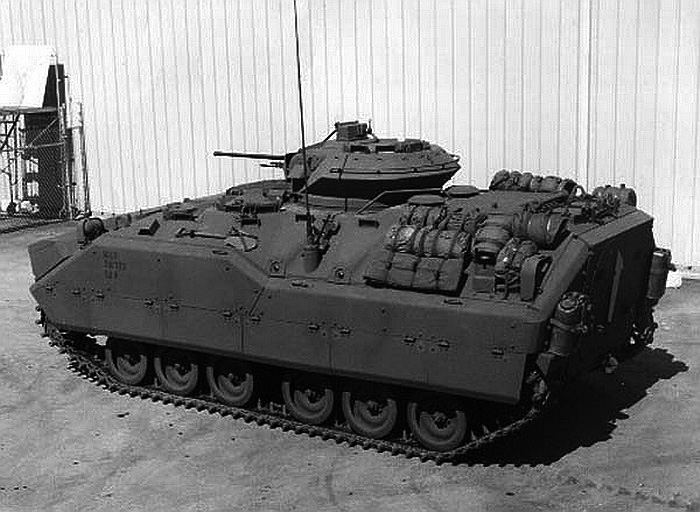
XM723 over
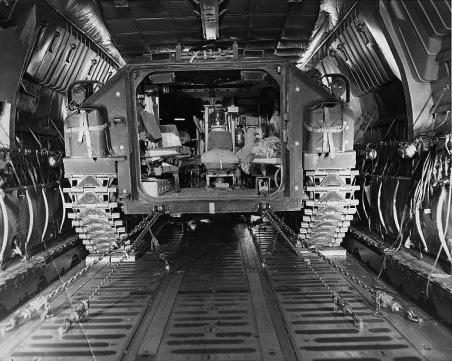
XM723 inside YC17
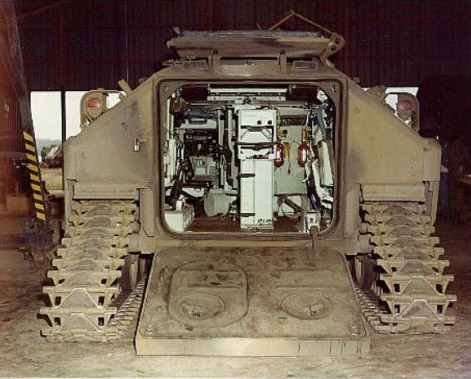
XM723 tracksdown open compartment
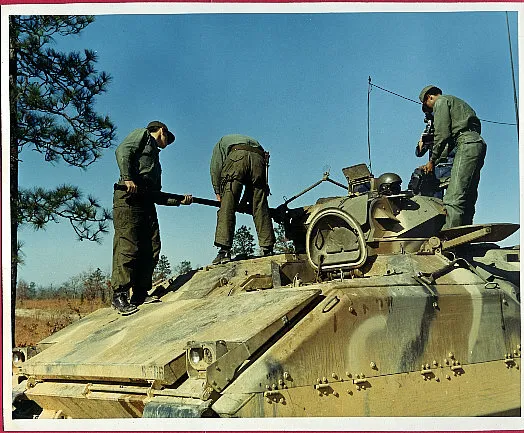
MICV70 barrel change
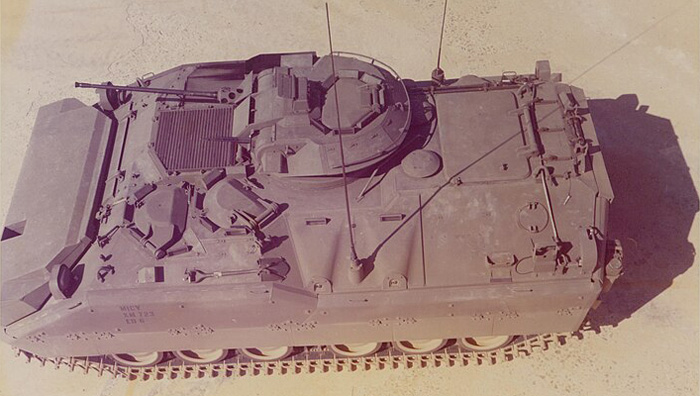
XM723 MICV Prototype Overhead View 1975
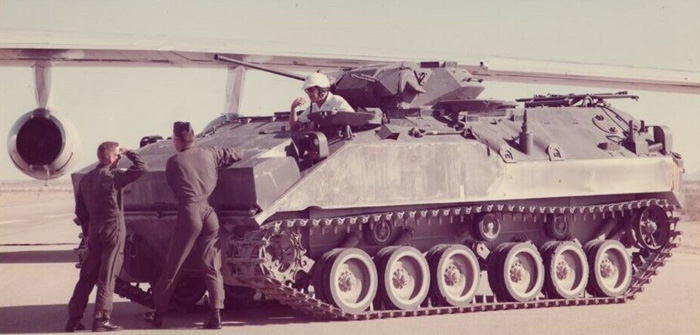
XM723 tactical transport tests
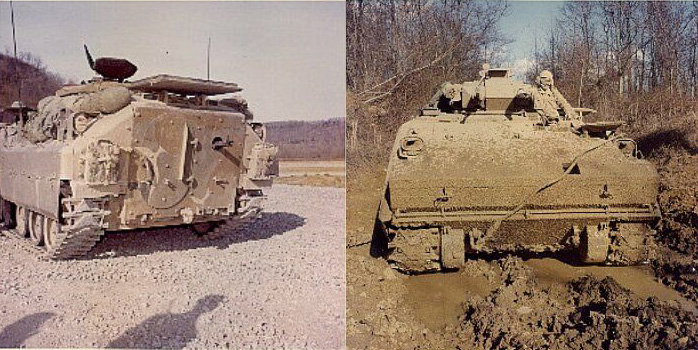
XM723 rear
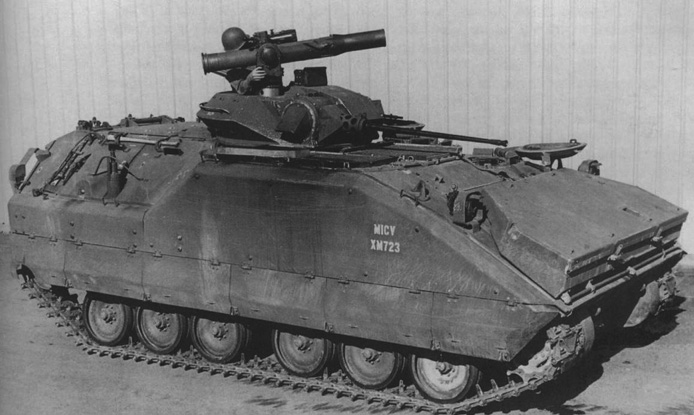
xm723 MICV TOW
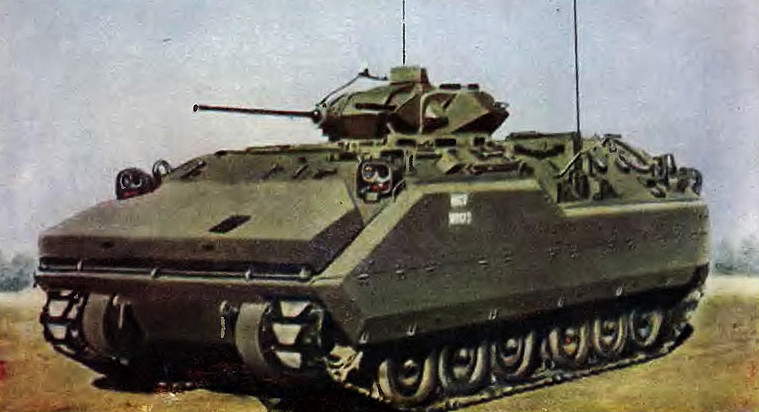
XM723 MICV-70 Prototype
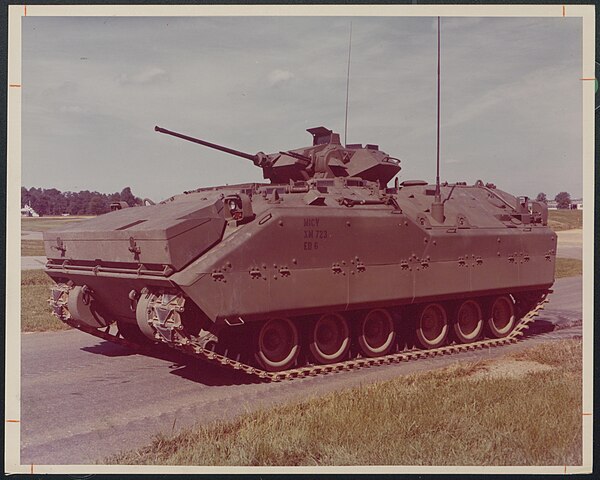
XM723 MICV Infantry Fighting Vehicle Prototype
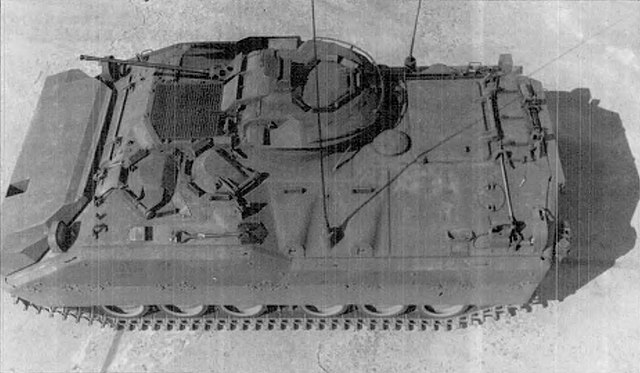
XM723 MICV view from above
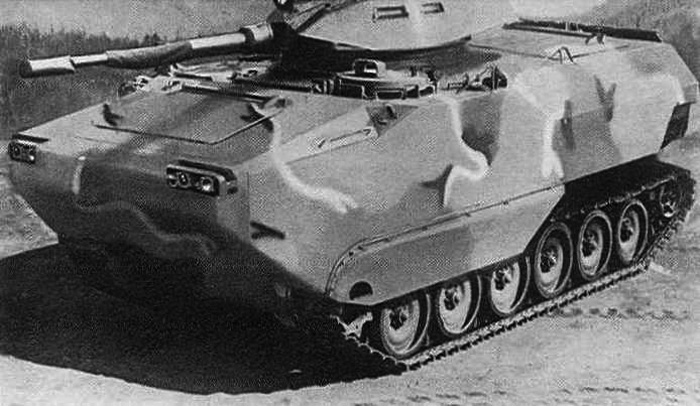
XM732 with LAV-300/90 turret
More
Links
on globalsecurity.orgapps.dtic.mil
army-guide.com
militaryfactory.com
en.wikipedia.org
secretprojects.co.uk
jstor.org Integrating Dismounted Infantry Capabilities with Combat Vehicles
info on fmcs, xm765, aifv, xm723-aifv and lvt-x designs

Cold War Tanks


































Cold war tanks posters

Cold War Main Battle Tanks

Cold War Soviet Army
Museums, Movies, Books & Games
The Tanks and Armor in pop culture
Tanks and armored vehicles in general are only really grasped when seen first person: The mass, the scale, it's all there. Explore also the way tanks were covered in the movie industry, in books and in video games.Movies:
Best tanks movie on warhistoryonline.com
On imdb.com
On bestsimilar.com/
miltours.com
liveabout.com/
watchmojo.com
Video Games:
pcgamesn.com
historyhit.com
levvvel.com
vg247.com/best-tank-games
mmobomb.com/
alienwarearena.com

